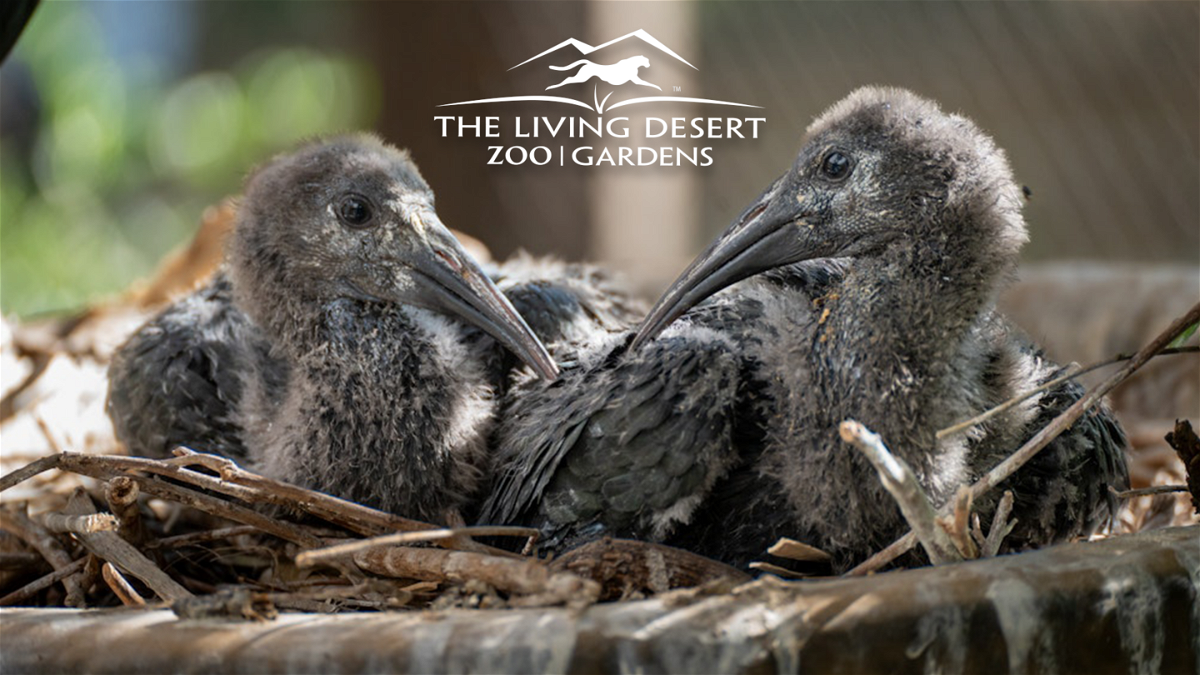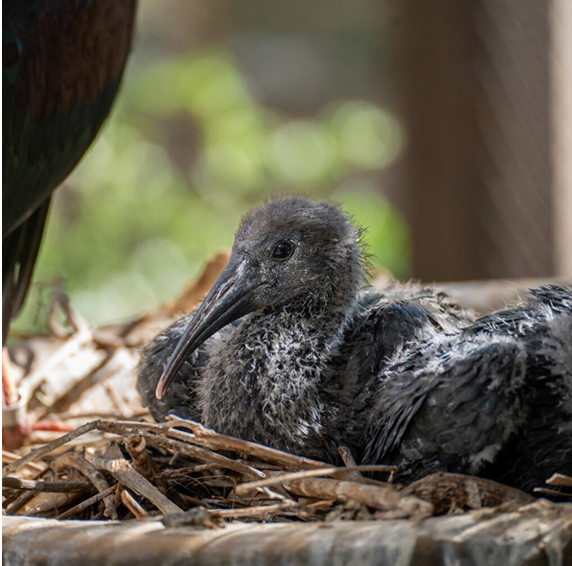The Living Desert welcomes two new northern bald ibis chicks

The Living Desert Zoo is currently celebrating two new additions to one of the world's most endangered bird species!
Born to Bastet (mom) and Ra (dad), two waldrapp ibis chicks recently hatched at The Living Desert.
Also known as the Northern bald ibis, as adults, these raven-sized birds have iridescent black plumage, a long, downward-curving red bill, and long legs. Their bald heads are covered with wrinkled pink skin and they have a shaggy ruff of black feathers around their neck, which is raised during courtship displays. The waldrapp ibis is found in the coastal areas of Morocco and other select areas of the Middle East.
These birds are particularly significant because there are only a few hundred remaining in the wild.
These hatchlings were part of the Northern Bald Ibis Species Survival Plan. This is a strategic and scientific program, managed by the Association of Zoos and Aquariums and is designed to maintain a healthy, genetically diverse, and demographically stable population for the long-term future.


- These birds were once common in the Alps of central Europe and their meat was considered a delicacy. Since young ibis were taken from their nests and served to royalty, much of what is known about their former range is taken from medieval cookbooks.
- Their long legs and long, downward-curving bill make them well adapted to obtaining food by probing shallow water, mud, and grasses. The tip of the bill is very sensitive, allowing the birds to detect food more by touch than by sight.
- The ancient Egyptian god of wisdom was depicted as a human with the head of an ibis.
- The waldrapp ibis’ genus name is “Geronticus,” which is derived from the Greek for “old man,” a reference to their bald and wrinkled heads.



